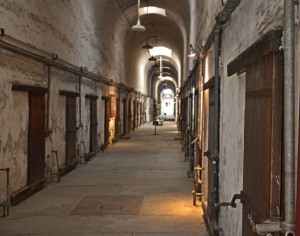Prisons are factories of crime where the convicted, with little hope of returning to “civilized” society, decide to make their way outside the law when they’re released.
The prison conditions don’t help – the cliques, mob tanks and gang corridors prompt violence and abuse between inmates. There are “correction” officers ignoring and even facilitating illegal drugs, consensual sex, rape, torture, and escape; these “law” officers are “instructing” the inmates how the world “really” works. When a prisoner is ill, the institution often fails to provide critical medical attention. Cruel, yes, but not unusual. In the Commonwealth of Virginia, we have some 40 doctors and 14 psychiatrists to care for about 30,000 prisoners.
When I was a NY federal prosecutor, we investigated and prosecuted prison corruption, wiring inmates and guards we “turned,” but there’s hardly a prison or jail in America to this day that could come up “clean” if carefully scrutinized.
Perhaps what’s worse is that we openly allow and encourage prison wardens to confine prisoners to solitary for indefinite periods.
You may have visited the Eastern State Penitentiary in Philadelphia. In 1829, those who conceived this revolutionary edifice believed that each prisoner would become penitent and reform if forced to be confined alone, so that his radiant soul could arise, trample “bad” impulses, and free the prisoner of all sin and misconduct forevermore. The small cell was bounded on one side by a heavy sliding door and a small enclosed garden at the other end. The practice produced desperate loneliness, followed by a sickening disintegration, a drugged feeling, disorientation, misery, anger, catatonia, madness, suicide attempts, and death. This was torture – plain and simple – in the name of reform. This prison’s bankrupt penology practices are on view for gawking tourists in its vacant halls, now a museum, but its brutal practice favoring indefinite solitary confinement persists and flourishes in prisons across the nation.
Nathanial Hawthorne’s Scarlet Letter describes prison as the “black flower” of civilized society – an apt metaphor when there are more than 80,000 prisoners nationally who spend 23 hours a day in isolation – and not just for a few days but for months, years and decades – inspired by Eastern State.
In Pound, Virginia, at the remotely located Red Onion State Prison, there was a hunger strike several years ago protesting various rights violations including the indefinite solitary confinement of 500 of the 750 inmates lodged at the Red Onion.
There’s medical consensus that such isolation breaks a man’s mental health, prompts delusions, compromises brain function and, unsurprisingly, leads to suicide. In response to wide-ranging criticism, Red Onion tweaked its practices.
A typical judicial response to a pro se prisoner’s civil rights complaint, despite all that we know about the heinous effects of isolation, was the decision several years ago by US District Judge James R. Spencer that inmate William Knight’s 22 months in solitary did not show any “protected liberty interest” that had been violated.
In a federal appellate decision this March, Circuit Judge Motz held that, if no state statute, regulation or policy creates a “liberty interest” barring indefinite isolation in a 71 foot square cell, as occurred in that case, then the prisoner is unprotected.
As a society, we must thread the judicial needle by federal and state statutory reform outlawing this cruel practice of indefinite solitary confinement, and declare with crystal clarity that solitary abridges an inmate’s “protected liberty interest” because other nations can punish and control their inmates without making them mad or suicidal.

